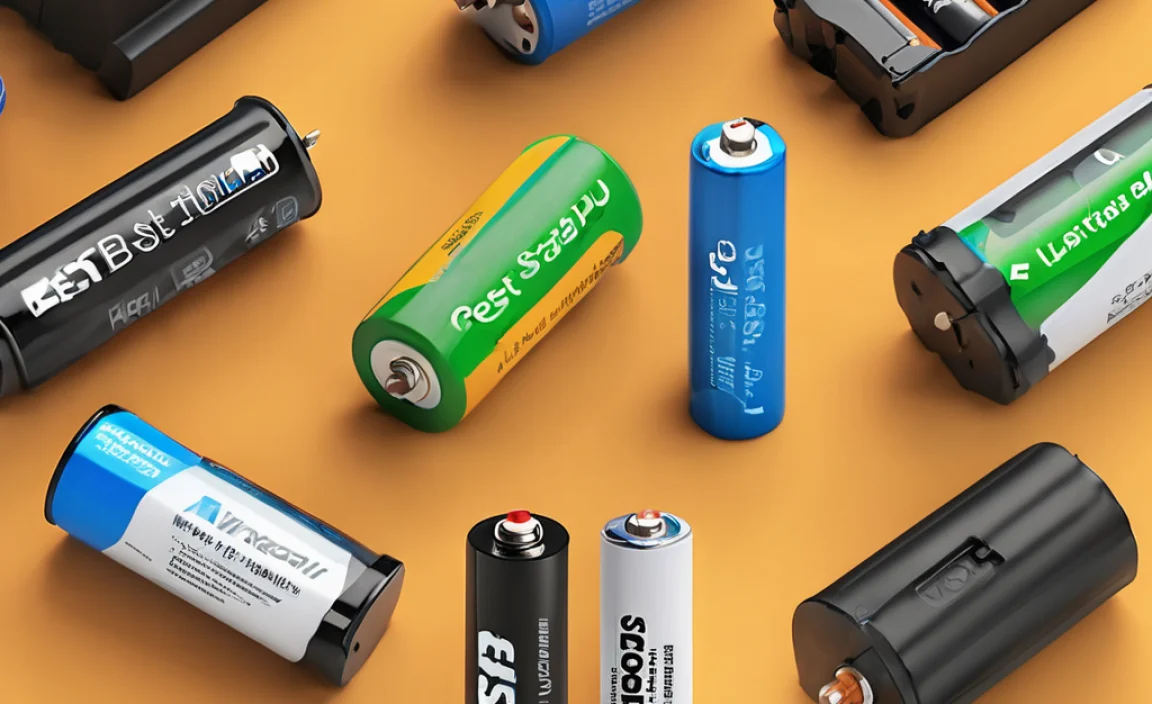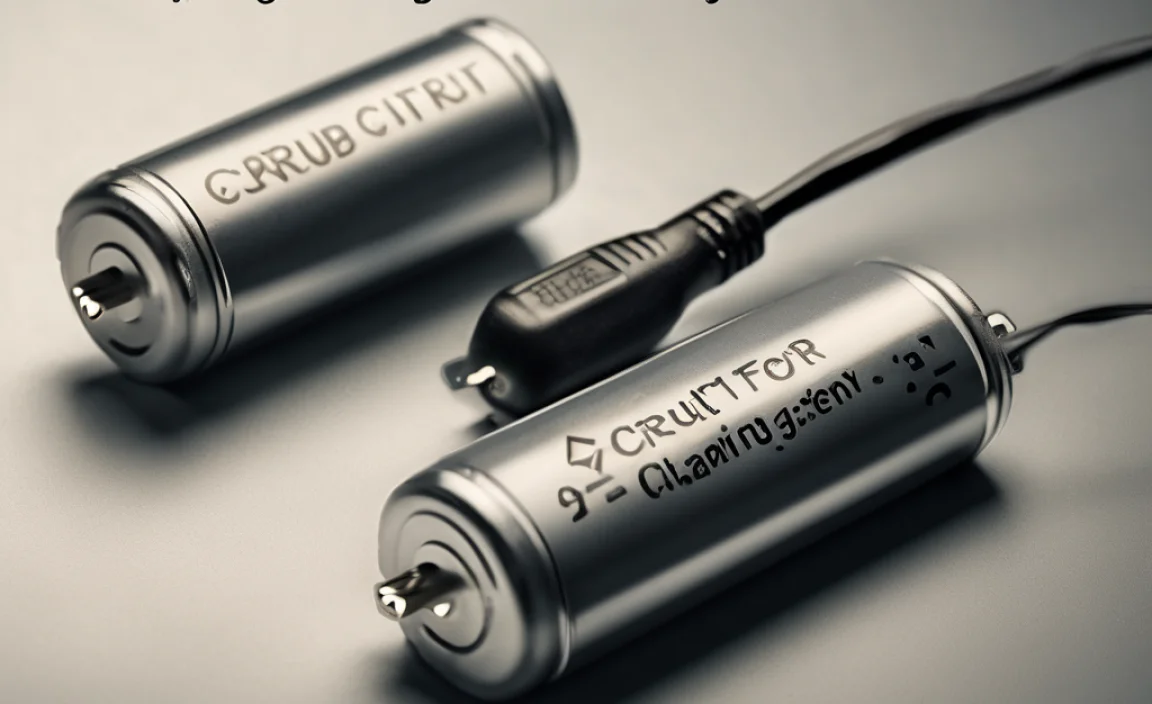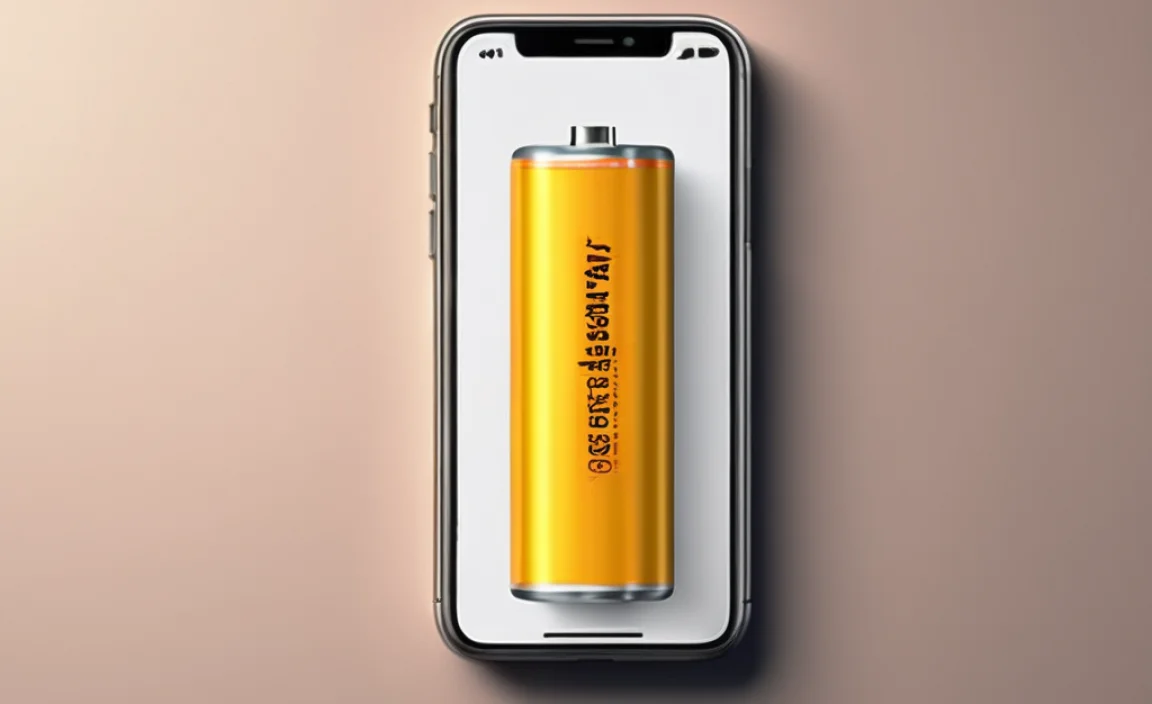Quick Summary: Choosing the right car battery is crucial for reliable starting. Look for your car’s make, model, and year to find the correct Group Size and Cold Cranking Amps (CCA) needed. Always check your owner’s manual or consult a professional for the best fit. A quality battery ensures your car starts dependably, every time.
Is your car battery giving you trouble? That sinking feeling when your car won’t start can be frustrating. It’s a common problem, especially in cold weather, and often points to a battery that’s past its prime or simply not the right one for your car. But don’t worry! Keeping your car powered up doesn’t have to be a complicated mystery. With a few simple pointers, you can easily understand what makes a car battery tick and how to pick the perfect one for your ride.
This guide will walk you through everything you need to know, from understanding battery numbers to making a smart purchase. We’ll cover the key things to look for, simple checks you can do yourself, and why the right battery is so important. Let’s get your car running smoothly again!
Why the Right Car Battery Matters More Than You Think
Think of your car battery as its heart. It’s the powerhouse that ignites the engine, and it keeps your car’s electronics humming when the engine is off. A healthy battery means a reliable car. An unhealthy or incorrect battery? That can lead to no-shows, unexpected repair bills, and a lot of stress.
Choosing the right battery isn’t just about getting one to fit. It’s about ensuring it has the power your car needs to start, especially on those chilly mornings. It’s also about safety and longevity. The wrong battery might struggle, overheat, or not last as long as it should. We’ll help you avoid these headaches.
Understanding Car Battery Basics: What Do All Those Numbers Mean?
Car batteries might look similar, but they have specific characteristics that tell you if they’re the right match for your vehicle. Don’t let terms like “Group Size” or “CCA” scare you. They’re actually quite straightforward.
Group Size: The Physical Fit
Group Size is the most important factor for a physical fit. It tells you the battery’s dimensions (height, width, length) and where the terminals (where you connect the cables) are located. Batteries come in different group sizes, like Group 24, Group 35, Group 51R, and many others. Your car is designed to hold a battery of a specific group size. Putting in a battery that’s too big won’t fit, and one that’s too small might not be secure.
- How to Find Your Car’s Group Size:
- Owner’s Manual: This is your best friend! Your car’s manual will clearly state the recommended group size.
- On Your Old Battery: Most batteries have the group size printed clearly on a label.
- Online Resources: Many battery manufacturer websites have tools where you enter your car’s details to find the correct size.
- Ask a Professional: Your local mechanic or auto parts store can tell you what you need.
Cold Cranking Amps (CCA): The Starting Power
CCA is a measure of the battery’s power. Specifically, it’s the number of amps a battery can deliver at 0°F (-18°C) for 30 seconds while maintaining a voltage above 7.2 volts. In simpler terms, it’s how much muscle the battery has to start your engine, especially in cold weather.
The thicker your engine oil gets in the cold, the harder it is to turn the engine over. A higher CCA rating means your battery is better equipped to handle this challenge and start your car even when it’s freezing outside. Your car manufacturer will recommend a minimum CCA rating for your vehicle.
Don’t just go for the highest CCA possible. While more power seems good, it’s not always necessary and sometimes can put extra strain on your car’s electrical system if it’s significantly higher than recommended. Stick to the manufacturer’s recommendation or a slightly higher number for added reliability in extreme climates.
Reserve Capacity (RC): Backup Power
Reserve Capacity refers to how long a fully charged battery can deliver 25 amps at 80°F (27°C) before its voltage drops too low to be useful. This is important if you find yourself stuck with a dead alternator or needing to power accessories (like lights or a radio) for a while without the engine running. A higher RC means more backup power.
Types of Car Batteries: What’s Under the Hood?
Most cars today use lead-acid batteries. However, there are a few variations within this type, each with its own pros and cons:
1. Flooded Lead-Acid Batteries (Wet Cell)
These are the most common and usually the most affordable type. They contain lead plates submerged in an electrolyte solution – a mixture of sulfuric acid and water (hence “wet cell”). They require occasional maintenance, such as checking and topping up the electrolyte levels with distilled water, especially in warmer climates or if the battery is older.
- Pros: Cost-effective, widely available, reliable for standard use.
- Cons: Can require maintenance, less resistant to vibration, can leak if tipped.
2. Maintenance-Free (Sealed Lead-Acid) Batteries
These are a step up from flooded batteries. They are sealed and designed so you don’t have to check or add water. They often use a different internal construction (like calcium-calcium or antimony-calcium alloys) that reduces water loss. These are what most people buy today.
- Pros: No maintenance required, spill-resistant, longer lifespan than basic flooded types.
- Cons: Can be slightly more expensive than flooded types, may not perform as well in extreme heat.
3. Enhanced Flooded Batteries (EFB)
EFBs are a newer technology designed primarily for vehicles with basic start-stop systems or those that do a lot of idling. They are more durable and can handle more charge-discharge cycles than standard batteries. They offer better performance in demanding conditions and are more resistant to corrosion.
- Pros: Better for start-stop technology, longer lifespan, more robust.
- Cons: More expensive than standard batteries.
4. Absorbent Glass Mat (AGM) Batteries
AGM batteries are considered premium. Instead of liquid electrolyte, they have the electrolyte suspended in fiberglass mats pressed between the plates. This makes them highly resistant to vibration, spill-proof, and able to handle deeper discharges. They are ideal for vehicles with high electrical power demands, like those with advanced start-stop systems, lots of electronics, or high-performance needs.
- Pros: Highly durable, completely spill-proof, excellent vibration resistance, faster recharging, longer lifespan, works well in extreme temperatures.
- Cons: Most expensive option, require a specific charging profile (using the wrong charger can damage them).
Important Note: If your car came with an AGM battery, it’s generally best to replace it with another AGM battery. They are designed for specific charging systems, and a standard flooded battery might not be able to handle the demands. Always consult your owner’s manual.
Choosing the Right Battery for Your Car: A Step-by-Step Guide
Ready to find the perfect battery? Follow these steps to ensure you get the right one.
Step 1: Consult Your Owner’s Manual
This is the most crucial step. Your owner’s manual is the definitive source for your car’s specific battery requirements. Look for sections on maintenance, under-hood components, or troubleshooting. It will list:
- The recommended Group Size.
- The minimum Cold Cranking Amps (CCA) required.
- Sometimes, it will even recommend specific battery types (like AGM for vehicles with start-stop systems).
If you don’t have your manual, you can usually find a digital version on the car manufacturer’s website by entering your vehicle’s VIN (Vehicle Identification Number) or year, make, and model.
Step 2: Check Your Current Battery Label
If your owner’s manual is unavailable, your current battery is a good reference. Carefully look at the label on the top or side of your existing battery. You should find:
- The Group Size (e.g., 35, 24F, 51R).
- The CCA rating.
- The Reserve Capacity (RC) rating.
Keep in mind that your current battery might have been a replacement, not the original. While it’s likely the correct size, always cross-reference with your manual or a reliable online tool if possible.
Step 3: Use Online Battery Finders
Most major battery manufacturers and online auto parts retailers have a “battery finder” tool on their websites. You simply enter your car’s year, make, model, and sometimes engine size, and it will show you the compatible batteries they offer. This is a fast and easy way to get recommendations.
Some great resources include:
- BatteryStuff – Car Battery Group Sizes Explained
- Websites for brands like Optima, DieHard, ACDelco, Duralast, etc.
Step 4: Consider Your Driving Conditions and Needs
Think about where you live and how you use your car:
- Cold Climates: You’ll want a battery with a CCA rating that meets or exceeds the manufacturer’s minimum. A little extra power is a good idea.
- Hot Climates: Heat is a battery killer. A battery with good reserve capacity and a robust construction (like AGM) might last longer.
- Demanding Electronics: If you have a lot of aftermarket accessories (powerful sound system, extra lights, etc.), consider a battery with a higher Reserve Capacity.
- Start-Stop Systems: As mentioned, these cars require EFB or AGM batteries. Using a standard battery will drastically reduce its lifespan.
Step 5: Understand Battery Warranties
Car batteries come with warranties, which are important. Warranties usually have two parts: a free replacement period (e.g., 1-3 years) and a pro-rated period (where you get a partial credit towards a new battery). A longer free replacement period often indicates a higher-quality battery.
Read the warranty details carefully. They often specify what voids the warranty, such as damage from improper installation, using the wrong charger, or running the battery completely dead.
Step 6: Purchase and Installation
Once you’ve chosen your battery:
- Purchase: Buy from a reputable retailer. Auto parts stores often offer installation services.
- Installation:
- DIY: If you’re comfortable and have the right tools, replacing a car battery can be a straightforward DIY project. Always disconnect the negative terminal first, and reconnect it last. Wear safety glasses and gloves, as battery acid is dangerous.
- Professional: If you’re unsure, let a mechanic or the auto parts store install it. They can also test your charging system to ensure it’s working correctly.
When to Consider Replacing Your Car Battery
Car batteries don’t last forever. Most last between 3 to 5 years. Here are signs it might be time for a new one:
- Slow Engine Crank: The engine turns over slower than usual, especially on cold mornings.
- Warning Light: The battery or check engine light comes on your dashboard.
- Corrosion: You see a white or bluish powdery substance on the battery terminals. While this can sometimes be cleaned, it often indicates an older battery or an issue.
- Swollen or Leaking Battery Case: This is an immediate sign of a damaged and potentially dangerous battery and needs replacing ASAP.
- Old Age: If your battery is over 3 years old and you’re experiencing minor issues, or you want to be proactive before a breakdown, consider replacing it.
Getting your battery tested regularly (e.g., annually at your mechanic or auto parts store) can help catch these issues early.
Battery Care and Maintenance Tips
How can you get the most life out of your car battery?
- Keep Terminals Clean: Periodically check for corrosion. You can clean it gently with a wire brush and a mixture of baking soda and water. Ensure the terminals are dry and snug after cleaning.
- Check Fluid Levels (for flooded batteries): If you have a non-maintenance-free battery, check the water levels every few months and top up with distilled water only. Never use tap water.
- Protect Against Heat and Cold: Extreme temperatures shorten battery life. Park in the shade or a garage when possible.
- Avoid Deep Discharges: Don’t leave headlights, radios, or other electronics on for extended periods with the engine off. If you do drain the battery, get it recharged and tested as soon as possible.
- Secure the Battery: Ensure the battery is firmly held in its tray. Excessive movement can damage the battery.
Other Power Sources: Adapters, Chargers, and Power Banks
While we’ve focused on car batteries, the world of power extends to our everyday devices. Understanding different power solutions can also save you hassle.
Phone Batteries
Your smartphone battery is typically a rechargeable lithium-ion or lithium-polymer. Over time, these batteries degrade, holding less charge. Signs include your phone dying quickly, shutting down randomly, or taking a very long time to charge. Replacing a smartphone battery is often possible, though it can range from easy to quite difficult depending on the phone model.
Phone Chargers
These convert wall power (AC) to a lower voltage (DC) that your phone can use. Chargers have ratings for voltage (V) and amperage (A). Higher amperage generally means faster charging, but your phone can only accept the charge rate it’s designed for. Always use a reputable charger from a known brand to avoid damaging your phone or creating a fire hazard.
Power Banks
Portable power banks store energy and can recharge your devices on the go. They are rated in milliampere-hours (mAh), indicating their total storage capacity. A 10,000 mAh power bank can recharge a typical smartphone battery several times. Choosing a power bank depends on how many devices you need to charge and how often.
Adapters
These are crucial for ensuring compatibility. For example, a USB-C to USB-A adapter lets you plug a USB-C cable into a USB-A port. In the car context, adapters might be used to connect different types of chargers or to modify power outputs, though it’s generally best to use components designed for your specific system.
For more on battery safety and standards, the U.S. Department of Energy provides excellent resources.
Battery Comparison Table
Here’s a quick look at different battery types and what they’re best for:
| Battery Type | Typical Applications | Pros | Cons |
|---|---|---|---|
| Flooded Lead-Acid | Standard gasoline engines, older vehicles | Affordable, widely available | Requires maintenance, less vibration resistant |
| Maintenance-Free (Sealed Lead-Acid) | Most everyday vehicles | No maintenance, spill-resistant | Slightly more expensive than flooded |
| Enhanced Flooded Battery (EFB) | Vehicles with basic start-stop systems, high electrical loads | More durable, good for start-stop, robust | More expensive than standard batteries |
| Absorbent Glass Mat (AGM) | Vehicles with advanced start-stop systems, luxury cars, high performance | Highly durable, spill-proof, vibration resistant, fast charging | Most expensive, requires specific charging |
Frequently Asked Questions (FAQ)
Q1: How do I know if my car battery needs replacing?
Look for signs like a slow engine crank, dashboard warning lights (battery or check engine), visible corrosion on terminals, a bulging or leaking battery case, or if the battery is more than 3-5 years old. A professional test can also confirm its health.
Q2: Can I just buy any battery that fits my car?
No. While the physical fit (Group Size) is important, you also need to ensure the battery meets your



